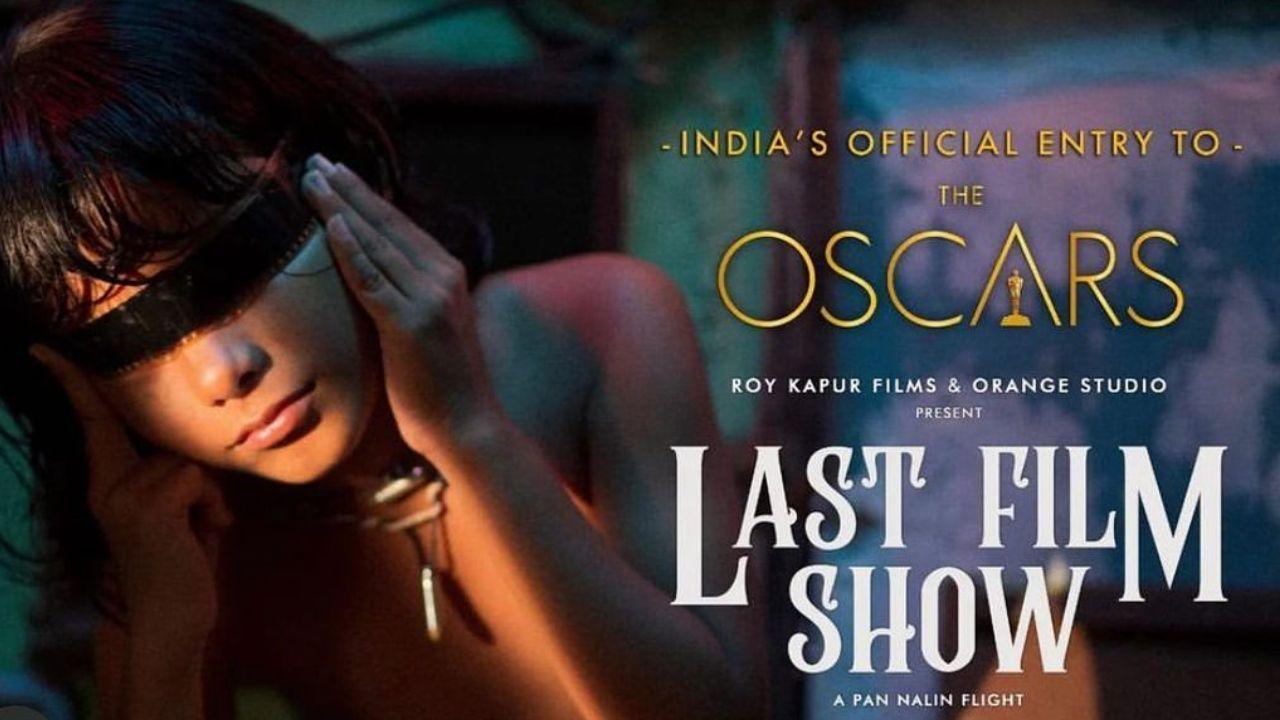Must admit, for personal reasons, I’ve had to watch this film on a screener (a small screen) — can totally image how the display of reflection, light (industrial, natural), colours, and indeed some money-shots to do with sprockets and negatives, would be way more mesmerising in an actual theatre. This is a work of visual art alright

Film Poster / Instagram Account of Pan Nalin (unverified)
Film: 'The Last Film Show'
Director: Pan Nalin
Cast: Bhavin Rabari, Dipen Raval
Rating: 3/5
ADVERTISEMENT
Frankly, as a movie-buff, it bothered me no end, okay, to a huge extent anyway, that I was unable to place this film to its timeline in reality.
In the sense that the film, about a little village boy, who finds access to a projection room in a cinema named Galaxy, and is besotted by it, is supposedly set in 2010.
Only that the films he watches repeatedly, through the light-window in that precious room of the theatre’s uppermost deck, effectively alternates between Jodhaa Akbar (2008) and Khuda Gawah (1992).
There’s a smattering of other random ‘Bollywood’ pix defying generations/genres too. And this wouldn’t be so much of a bother for an international audience, given the number of top film-festival olive-branches I noticed in the opening credits.
But it’s not a trivial niggle for a movie about movies, per se. And what draws a young child into this hallucinatory world of cinema — is it the action, drama, actors, story, sex/violence…. I think above all, cinema, for the young mind, is magic first — as it was for the world, when it was invented, anyway.
That’s essentially what the young boy (a naturally terrific, Bhavin Rabari) is viscerally consumed by — to begin and end with. What comes between him, and the films?
Also Read: ‘Doctor G’ movie review
Practically everything, from family/father, poverty, and the distance to the closest theatre, starting with where he lives — a strange hamlet called Chalala in Kathiawad (Saurashtra in Gujarat), with nothing around, besides a forest full of deer and lions, and a railway station servicing passengers at a pit-stop.
This is where the boy serves tea, moonlighting in his father’s chai shop. Which also explains the kid finding life inside a world of lights and sounds instead.
The picture opens with the shot of what look like kash fields, with the child running through it, while the rail track is nearby — making for a recognisable tribute to Pather Panchali.
What follows is the bright kid — blessed with jugaad, that is, pulling off innovations based on unlikely ingredients around — to recreate the magic of cinema himself.
Seeing through broken, coloured bottles, lensing the world, as if through a camera, sometimes. Learning to project a reel on a flat surface, recreating an actual projector, through its operable science alone.
Must admit, for personal reasons, I’ve had to watch this film on a screener (a small screen) — can totally image how the display of reflection, light (industrial, natural), colours, and indeed some money-shots to do with sprockets and negatives, would be way more mesmerising in an actual theatre. This is a work of visual art alright.
Also, I’d love to meet such a kid. He’d be playing around with a cellphone at present. It turns out it’s the director himself. This is a semi-autobiographical work.
It’s during the course of writing this review that I learnt Pan Nalin, 57, actually stands for Nalinkumar Pandya, a Gujarati director who, because of films like Samsara (2001), Angry Indian Goddesses (2015) — both of which somehow show up as films within this film — I’d thus far assumed as an Indian ‘festival director’, based, bred abroad.
Evidently not. And while all filmmakers, without an exception, have their own romantic stories of how they first got infatuated with cinema, many of them involving theatres and projection, Nalin’s is captivating enough for the strides he took, to strike it big, if you may.
Which is probably the reason the picture’s time-setting seems slightly off — no sign of cellphones anywhere, only landlines for communication as train tracks go from meter to broad gauge.
Of course this doesn’t take away from the expected allusion to Giuseppe Tornatore’s classic Cinema Paradiso (1988), a deeply political film that The Last Film Show is unfortunately not. But will be compared against, nonetheless.
For, likewise, along with the film, unspools a unique bond, between a boy and a cinema projectionist. Except, we don’t quite know which direction this is headed, besides the inevitable lament on the loss of cinema itself, as the world, including film, goes digital, eventually!
The poor desi boy weighs in on the power of light, from where come stories, therefore appear the magic of movies. The Last Film Show, originally in Gujarati (Chhello Show), is India’s official entry to the Oscars, 2023. Whether or not I think it’s the best Indian film of the year, thereby, is immaterial — you can tell why the jury picked it though.
Also Read: Akshay Kumar starrer 'Ram Setu' gets an official game
 Subscribe today by clicking the link and stay updated with the latest news!" Click here!
Subscribe today by clicking the link and stay updated with the latest news!" Click here!







